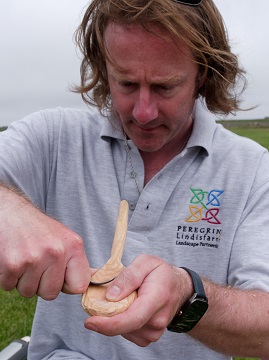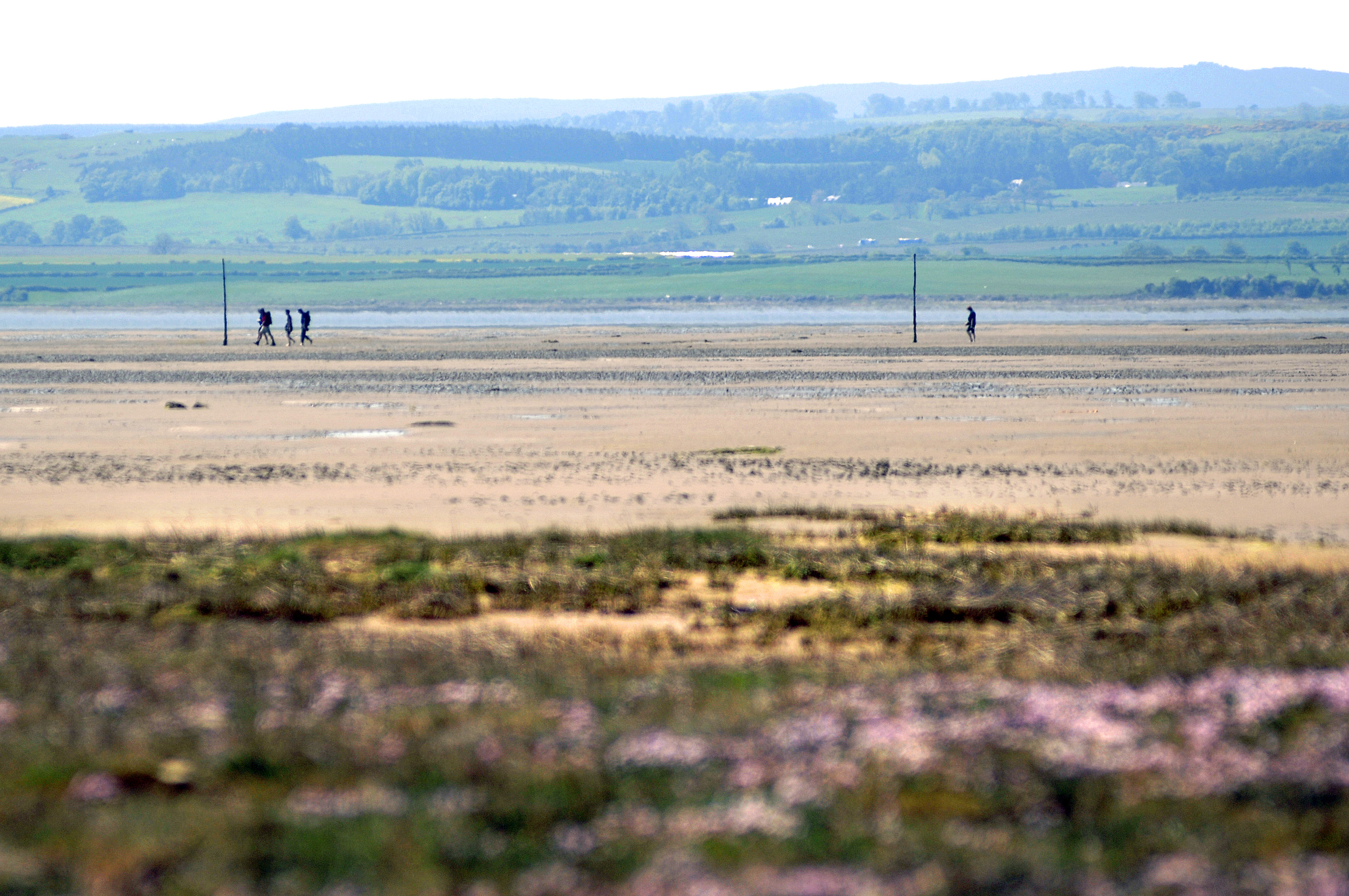Community Archaeology Project uncovers Saxon church
The second Peregrini Heritage Festival on Holy Island over the weekend of the 17th and 18th June was bathed in sunshine and shone the spotlight on a number of Peregrini activities. Around 3000 people visited over the course of the weekend and got to try their hand at a range of heritage skills including candle making, wool spinning, pot making and willow weaving.
The Immersive Northumbrian Landscapes art exhibition was a huge draw with the volunteer led art project bringing in over 400 people. The exhibition was a result of a number of creative workshops in which Northumberland residents explored the unique environment of the Whin Sill grasslands. Working with Newcastle based Helix Arts and contemporary artists Lindsay Duncanson and Graham Patterson, together with experts in Geology, Archaeology and Archives, they experienced the landscape in a radically different way. The exhibition showcased local people's creative responses to immersing themselves in the beauty, history and geology of a place.
Brenda Stanton, the chair of the Peregrini Lindisfarne Partnership commented that “Community participation is at the heart of the Peregrini project and the heritage festival has provided the opportunity for people to learn more about their natural and cultural heritage. We are immensely grateful to all the fabulous volunteers that came along and made the festival so special.”
Also creating a buzz was the community archaeology dig on Lindisfarne Heugh. The majestic Heugh on Holy Island has always piqued archaeologists’ interest given its close proximity to the ancient priory site and the obvious defensive and strategic advantages of the prominent whinstone ridge. The focus of investigations is on a site just west of 'the beacon' where the substantial foundations of a large rectangular building have been unearthed.
he foundations consist of large stone flags set on the natural boulder clay, defining a rough rectangle approximately 16 metres long and seven metres wide, with the east end more roughly constructed and slightly stepped-in to form a distinct component which is best interpreted as the chancel of an early chapel or church.
The construction of the chancel against a partially robbed-out wall between chancel and nave suggests that the chancel may have been a later addition. Other features of the building include a doorway in the north part of the west wall and another at the west end of the south wall, with remains of an external flagged floor. Apart from some crudely dressed window surrounds, including arched lintels, few artifacts have yet been found to elucidate the dating or phasing of the structure, but all suggestions are that it is very early, certainly pre-Conquest in origin.
Ivor Crowther, Head of HLF North East said: “Thanks to money raised by National Lottery players, the Peregrini Landscape Partnership is having a real impact on the heritage of the Island of Lindisfarne – from its role as a haven for wildlife to its archaeological significance as demonstrated by recent discoveries on the Heugh. As well as forging some fantastic partnerships, this scheme is putting local people at the heart of their landscape, whether through art, traditional skills or taking part in excavations. We look forward to seeing the project continue to succeed.”
Thank you to everyone who helped out over the course of the weekend and made the event so successful!
Other Photos


